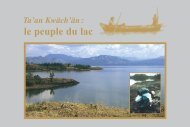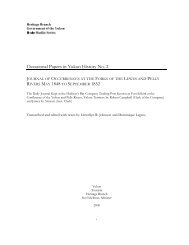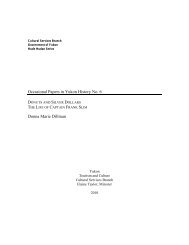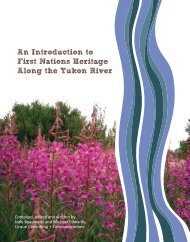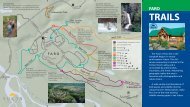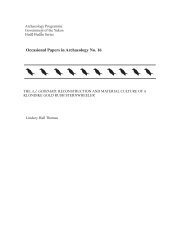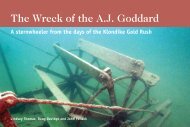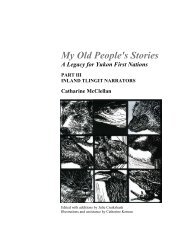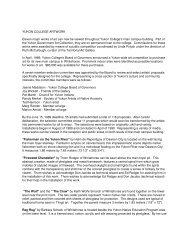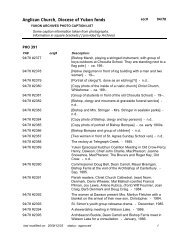Sustainable Tourism: The Tour Operators' Contribution
Sustainable Tourism: The Tour Operators' Contribution
Sustainable Tourism: The Tour Operators' Contribution
You also want an ePaper? Increase the reach of your titles
YUMPU automatically turns print PDFs into web optimized ePapers that Google loves.
6.4 VASCO Travel:<br />
Restoration of the Sarica Church in<br />
Cappadocia<br />
Description of Good Practice<br />
To contribute to local development and improve co-operation with local<br />
communities, VASCO Travel, which offers travel services and tours in<br />
Turkey for about 200,000 customers per year from Austria, Germany,<br />
Slovakia and Hungary, has initiated and financially supported the restoration of Sarica Church in<br />
Cappadocia, central Turkey. Sarica Church is a soft limestone carved structure, typical of rock cut<br />
churches in Cappadocia. <strong>The</strong> restoration project was considered necessary to preserve the church, as<br />
the soft limestone was being destroyed by moisture and humidity, and a large crack had developed in<br />
the building’s structure.<br />
Although Sarica Church was not originally on VASCO’s itineraries, in summer 1996, a VASCO tour of<br />
Cappadocia with the Austrian Federation of Seniors came across the church by chance and recognised its<br />
need for preservation. VASCO’s representatives realised that the church could disappear in a few years,<br />
as water was filtering in the from the roof, destabilising the whole structure. As Sarica was a small-scale<br />
rock cut church, VASCO’s General Manager decided to contribute directly to its conservation by financing<br />
the restoration work.<br />
<strong>The</strong> project began in 1997, with the collection of church documentation phase, and the restoration<br />
work started in August 2001. Restoration plans were submitted to and approved by the State<br />
Monument Protection Board. During the restoration of the church, a building that once served as<br />
a dining room for the monks was<br />
discovered directly next to the church,<br />
and it is now being restored. This<br />
additional work has caused the<br />
restoration project to take longer than<br />
anticipated and required additional<br />
funds from VASCO.<br />
Implementation<br />
<strong>The</strong> restoration activities were coordinated<br />
by KA.BA Conservation of<br />
Historic Buildings and Architecture<br />
Ltd, a restoration company based in<br />
Ankara. <strong>The</strong> company was selected after<br />
consulting with experts at museums and<br />
universities. Within VASCO, the General<br />
Manager was personally in charge of the<br />
project and oversaw the whole process.<br />
On-site management was handled by<br />
KA.BA, which reported on a periodic basis to<br />
the General Manager. VASCO supported the<br />
work of KA.BA’s staff of architects, workers and civil engineers. In addition, an associate professor of<br />
Byzantine Art History from Hacettepe University in Ankara and an expert on Cappadocian architecture<br />
served as advisors during the restoration process.<br />
plaNs for the church restoratioN<br />
<strong>Sustainable</strong> <strong><strong>Tour</strong>ism</strong>: <strong>The</strong> <strong>Tour</strong> Operators’ <strong>Contribution</strong><br />
6. Cooperation with Destinations




